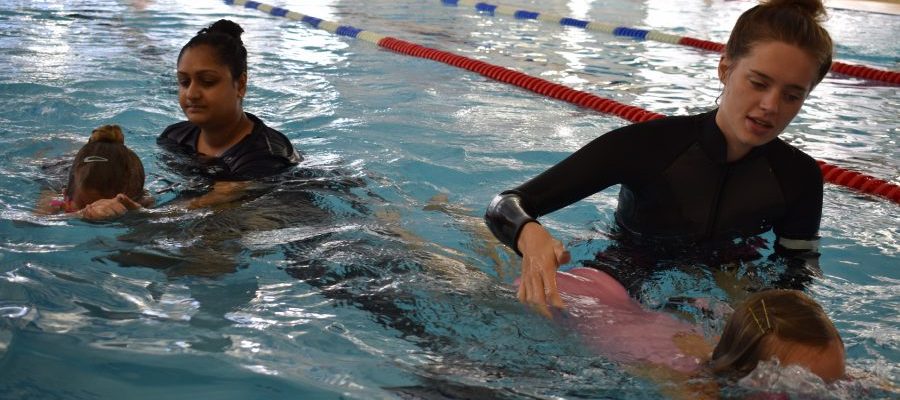
22 May What to practice when you take your child swimming
When your child first starts swimming it can be nerve wracking and a stressful situation for parents, especially if they are nervous around the water. To help your child in this process to help them grow in confidence, we recommend taking your child swimming outside of lessons and turning it into a fun activity, rather than something to be afraid of. This is beneficial for all abilities because it differentiates the swimming lessons and the fun with parents, it can help with concentration in lessons as they are more used to the swimming pool setting.
If you would like to reinforce their teaching from their swimming lessons during your free time, here are some simple techniques to practice.
For Beginners:
- Blowing bubbles
- Kicking legs
- Arm scoops.
To help recreate a lesson situation, parents can hold the child in the water under the arms, allowing them to feel more assured. Once they are confident use the coaxing method to try and get your child’s face in the water. Start by getting them to blow bubbles, then getting their nose in the water and then get your child to look down at the bottom of the pool with their eyes in. This can sometimes be a fast process, or it can take a while. Some children don’t like getting their eyes in the water because they fear the water stinging their eyes. Goggles can help this, but it does depend on the individual and how confident they are.
For Intermediates:
Once your child has both become more confident and has moved up in their swimming group from beginners to intermediate, their lessons focus more on stroke break down. They will probably be quite excited and will want to show you what they have been learning. Ask them questions of the strokes and what they have to do. It will help to do simple drills, such as:
- ‘Rockets’ – one hand on top of the other, extended arms out straight above head (horizontally), face in the water and fast kicking legs.
- ‘One arm scoops’ – one arm on a float (if you have one) and one arm scoops the water, with fast kicking legs. Then switch arm.
- Full stroke front crawl – switch your position to the side of your child (still holding them under their arms), this will give them space to incorporate both arm movements and kicking.
Children are generally scared or not as comfortable in the deep end, so taking them swimming and going up to the deep end will help improve their confidence. Taking equipment aids into the deep end will help your child being more at ease, using woggles/noodles up in the deep end will give them extra support and help reduce fatigue. You could also do jumping in, rather than doing this in the deep end do it where you can stand up and catch your child if you need to, this will help your child understand the concept of the water being deeper and having to swim back to the surface and to the wall.
For Advanced:
Finally, once your child is an advanced swimmer. They will more than likely want to show you their swimming. You can encourage them to do;
- Lengths
- Technique break downs – such as kicking only or arm pull only lengths.
- Tumble Turns
It would be beneficial to work on their stamina, so they can do more than one length at a time and not get tired, so when they show you their swimming get them to do 2 lengths at a time (by the wall if they need to stop). You can also practice drills and tumble turns to help them in their swimming. Tumble turns are easily broken down, starting off with a handstand and then into a ball and pushing yourself forward. Your child will have learnt these in their lessons, a lot of children don’t like the sensation of water getting up their nose; This is where they need to blow bubbles out of their nose, whilst turning to push the water out.
Most importantly, use extra swimming time to have fun in the water! Swimming may be a vital life skill, but enjoying yourself whilst learning is just as important.


